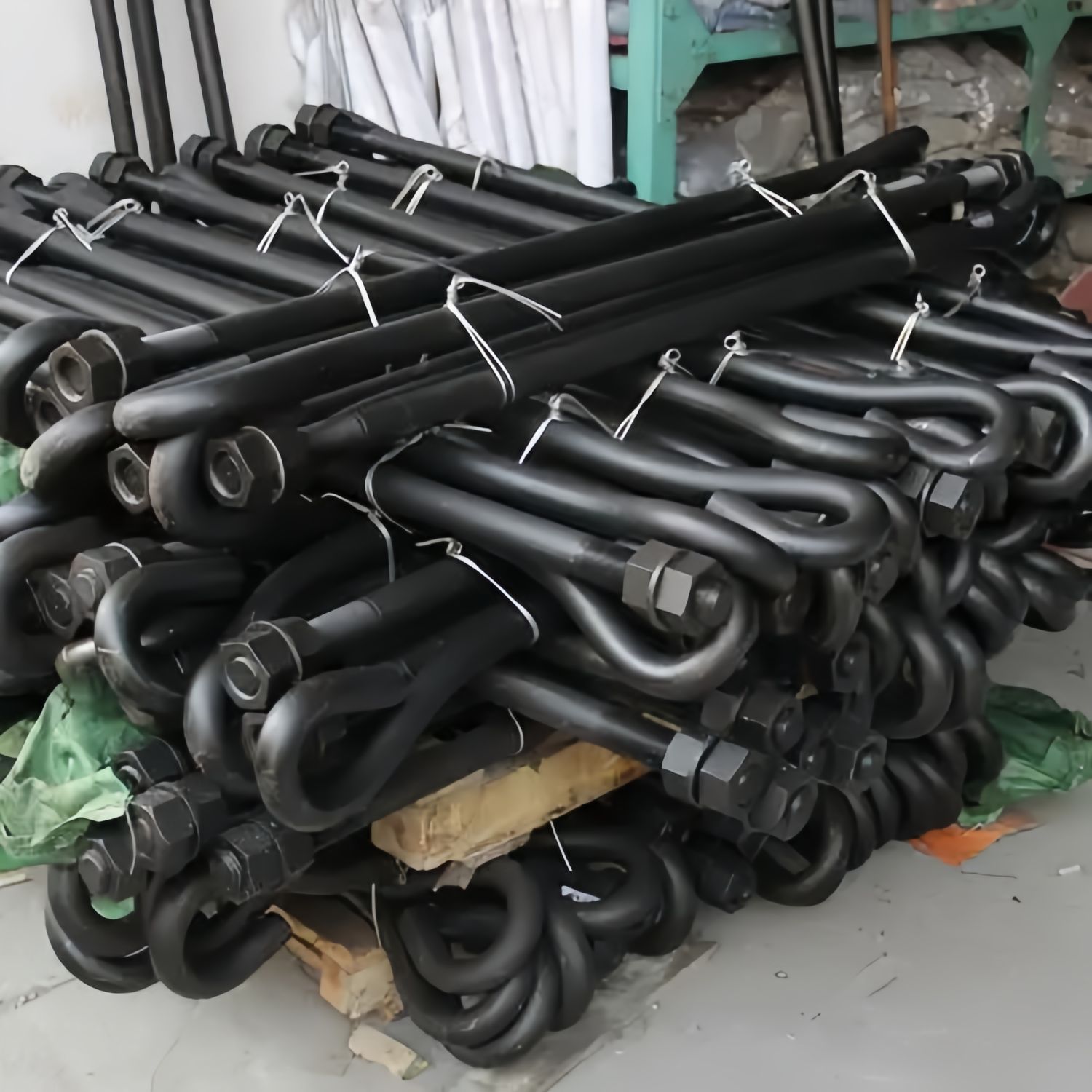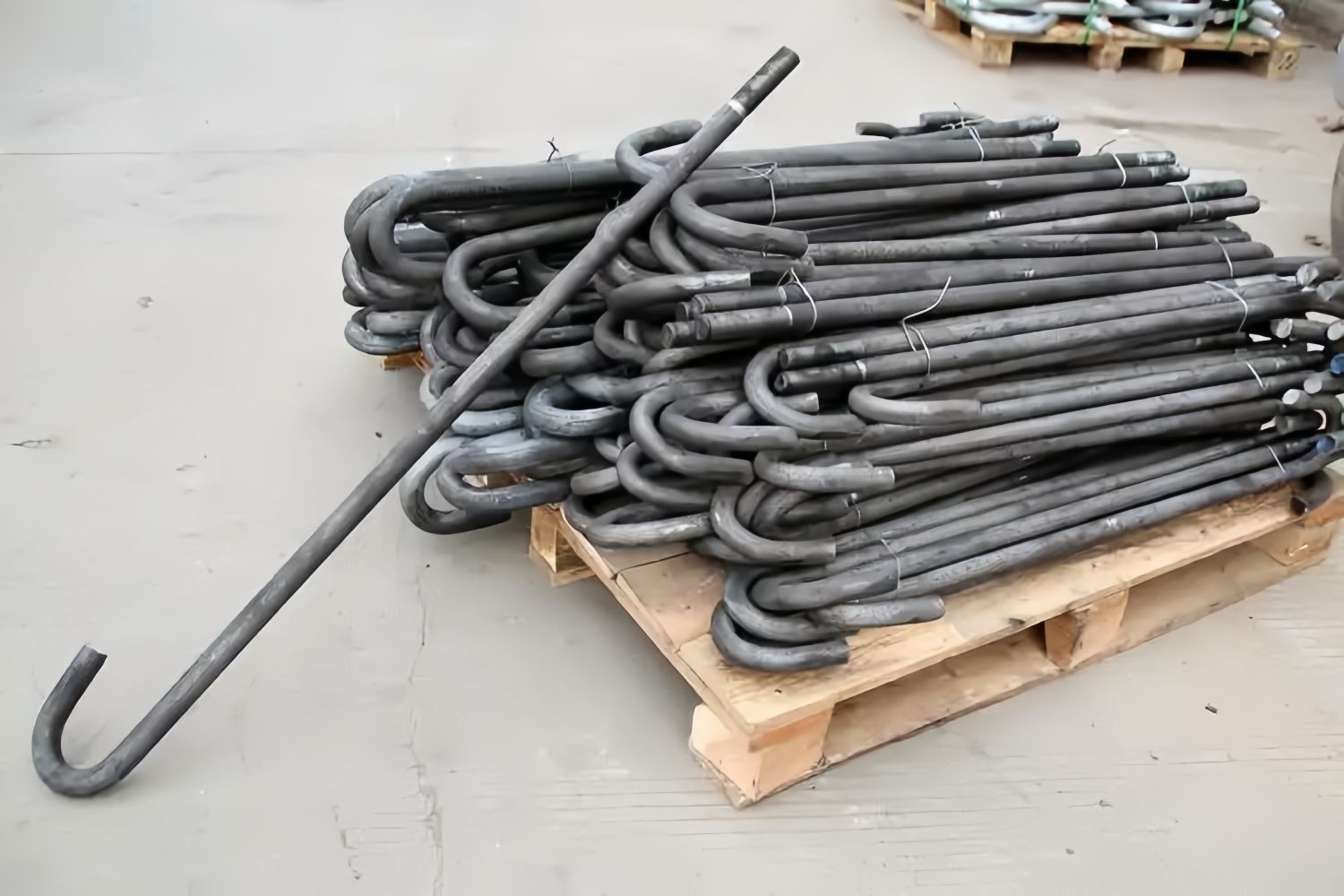The Role of Foundation Bolts in Modern Construction Projects
When we marvel at a soaring skyscraper or a vast industrial facility, our eyes are drawn to the glass, steel, and sweeping architectural lines. But the most important of these structures are the components we never see, buried deep within the concrete: foundation bolts. These simple pieces foundation bolts are critical to the safety, stability, and longevity of any building. In this blog, we'll dig into the role of foundation bolts in construction projects and understand the foundation bolts’ precision, performance and durability.
The Important Role of Foundation Bolts in Construction Project
We can consider foundation bolt as the vital link between a building and its foundation. Their main role is to transmit loads. Whether from gravity, wind, earthquakes, or operational forces from the building down into the concrete footing and ultimately, the ground. Here’s a breakdown of their key functions:
Anchoring and Stability: The most fundamental job. They securely fasten structural elements like steel columns, machinery, and pre fabricated walls to the concrete foundation, preventing uplift from wind or overturning.
Load Transfer: They are designed to handle a combination of shear forces (side to side movement) and tensile forces (pulling out stresses). This ensures that dynamic loads, such as those from moving equipment or seismic activity, are safely dissipated.
Precision and Alignment: During construction, foundation bolts are set with extreme precision in the wet concrete. This "setting out" process is crucial, as the bolts act as a guide for the exact placement of the steel or structural elements that will be erected on top, ensuring the entire building is square and level.
Safety and Resilience: In essence, they are a primary component of a building's structural integrity. Properly specified and installed foundation bolts are non-negotiable for meeting building codes and ensuring the safety of occupants, especially in areas prone to extreme weather or earthquakes.
Anchor Bolts vs. Foundation Bolts: Is There a Difference?
This is a common point of confusion in the industry. In practical, everyday language, the terms are often used interchangeably. However, a subtle distinction can be made: Foundation Bolts: This is a broader term typically used to describe bolts that are used to secure a structure to its foundation. The emphasis is on the application,the massive, ground level base of a building. They are often larger in diameter and length due to the significant loads they must bear.
Anchor Bolts can be seen as a subset or a type of foundation bolt. It often refers to bolts used to anchor non-structural elements or lighter structural items into existing concrete. For example, anchoring a steel column to a concrete slab within a building or securing a piece of machinery to a floor. The Bottom Line: While all bolts used in a foundation are anchor bolts, not all anchor bolts are necessarily "foundation bolts" in the grandest sense. For major construction, the term foundation bolt implies a heavy duty anchor bolt designed for the primary structural connection.
High Strength Foundation Bolts for Steel Structures
Steel structures such as bridges, industrial plants, and large commercial buildings require high strength foundation bolts that can withstand dynamic and static loads. These bolts are often made from high grade carbon steel or alloy steel and are heat treated to achieve superior mechanical properties. These materials offer high tensile and yield strength, ensuring that steel columns remain securely anchored even under heavy loads, high winds, or seismic activity. In coastal or outdoor environments, hot dip galvanized or stainless-steel foundation bolts are preferred for their corrosion resistance and long-term performance.
Foundation Bolt Standards and Specifications (ASTM, DIN, ISO)
To ensure safety and interoperability, foundation bolts are manufactured to rigorous international standards. These standards dictate the chemical composition, mechanical properties, dimensions, and testing requirements. Key standards include:
ASTM (American Society for Testing and Materials): Predominant in North America and many international projects.
ASTM F1554: This is the go-to standard for anchor bolts. It covers three grades (36, 55, 105) with varying strength levels, allowing engineers to select the optimal bolt for the specific load requirements.
ASTM A325 & A490: While often associated with structural steel connections, these high-strength bolt standards are relevant for certain heavy-duty foundation applications.
DIN (Deutsches Institut für Normung - German Institute for Standardization): Widely used in Europe and influenced regions.
DIN 931/933: Standards for hex bolts and screws, which form the basis for many anchor bolt designs.
DIN 580: Specifically for anchor bolts with a forged ring on the embedded end.
ISO (International Organization for Standardization): These standards aim to create global harmony.
ISO 898-1: Specifies mechanical properties for fasteners made of carbon steel and alloy steel.
ISO 4775: Similar to DIN 580, it specifies requirements for headed anchor bolts.
Adherence to these standards provides engineers and contractors with the confidence that the bolts will perform as expected.

Choosing a Right Foundation Bolt Supplier for Large Construction Projects
Selecting a supplier for a big project is a decision that carries as much weight as the bolts themselves. Cost should never be the only factor. We also should consider below conditions:
Quality Assurance and Certification: The supplier must provide mill test certificates (MTCs) or material test reports (MTRs) proving the bolts conform to the specified ASTM, DIN, or ISO standards.
Manufacturing Capability: Can they produce the required quantities, sizes (especially very long or large diameter bolts), and grades to meet the project schedule?
Technical Expertise: A good supplier will have engineers who can help with installation guidance, load calculations, and custom solutions for complex connections.
Proven Track Record: Look for a supplier with experience in projects of a similar scale and type (e.g., high rises, power plants, bridges).
Logistical Reliability: Timely delivery is critical to avoid costly construction delays. The supplier must have a robust supply chain and logistics network.
Experienced foundation bolts manufacturer like Fastenmetal LTD, which specializes in custom bolts, stone cladding clamps, and fastening solutions for heavy construction, ensures your project achieves both safety and efficiency from the ground up.
Foundation bolts may be out of sight, but they should never be out of mind. They are the fundamental link that ensures our structures remain upright and safe. From understanding their basic role to specifying the correct high strength bolt according to international standards, every detail matters. Partnering with a knowledgeable and reliable supplier is the final, crucial step in laying a foundation that is truly built to last.

Additional Blogs

How construction can cut Its carbon footprint by caring for soil
Soil is often dismissed as mere dirt, but it is one of the planet’s most powerful carbon stores, holding more than all of the world’s forests combined. Yet in our rush to build, pave and develop, we...
Read moreWhat is bridging damp? How it happens and how to fix it
Bridging damp happens when moisture finds a path around the building’s damp-proof course (DPC) so it reaches your internal walls and skirting. If you see damp patches rising above the skirting or...
Read more

The silent death of the fixed-price contract
For decades, the fixed-price contract has been the backbone of construction procurement. It promised certainty with a defined scope, an agreed sum and a clear transfer of risk from client to...
Read more